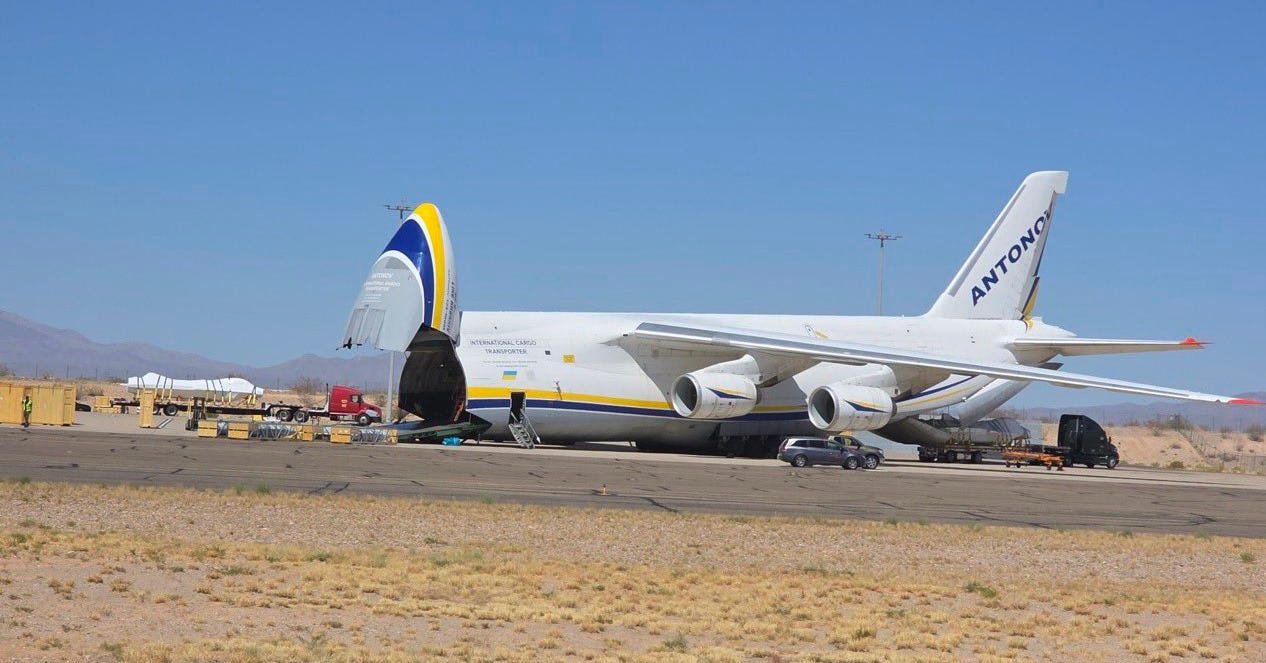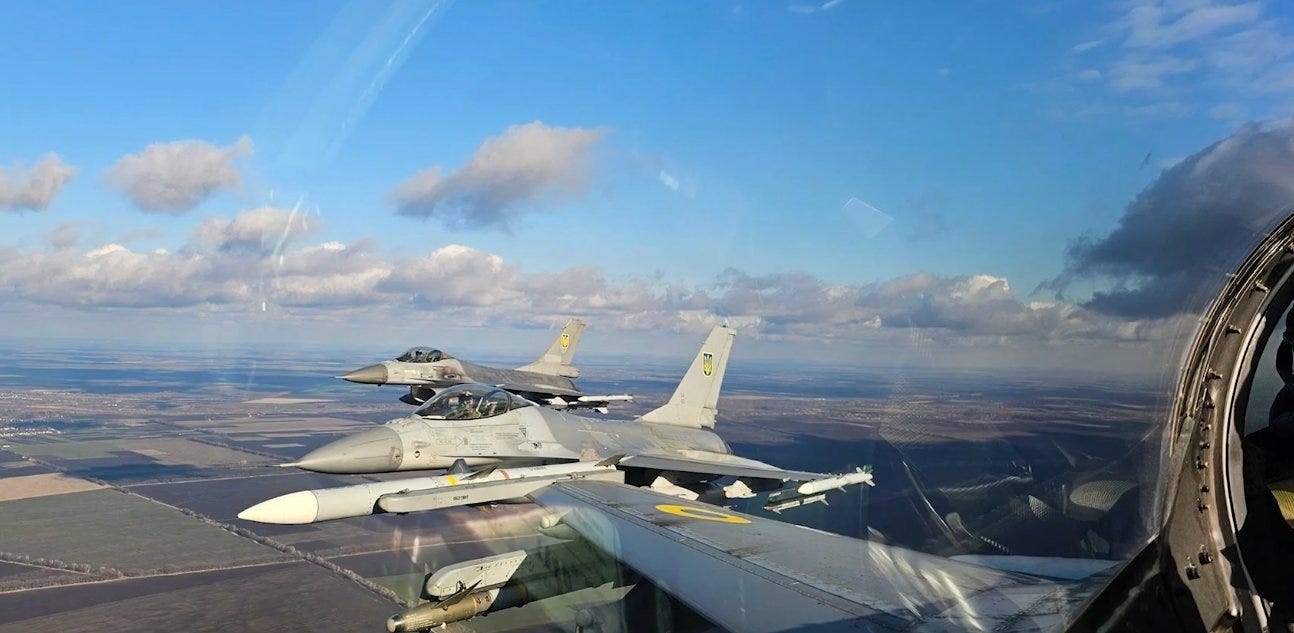No, the United States is not giving flyable Lockheed Martin F-16 fighters to Ukraine. Yes, the U.S. is giving Ukraine parts and equipment to support the 85 supersonic F-16s Ukraine is getting from Belgium, Denmark, The Netherlands and Norway.
Two of the jets have been lost since they flew their first combat missions over Ukraine back in August.
On Monday, far-right media personality Laura Loomer posted photos “sent by a follower” that depict a plastic-wrapped F-16 fuselage being loaded into the hold of a Ukrainian Antonov An-124 transport at Tucson International Airport in Arizona.
Keystone Intel subsequently dug up additional imagery, posted by a logistics firm, of wrapped F-16 fuselages being squeezed into the huge airlifter. “These photos confirm that at least three F-16s were transported in the Antonov,” Keystone noted.
It’s obvious where the disassembled F-16s came from. Davis-Monthan Air Force Base in Tucson is home to the Air Force’s 309th Aerospace Maintenance and Regeneration Group, which stores thousands of surplus U.S. military aircraft including hundreds of older F-16s.
AMARG routinely recovers stored aircraft for ongoing use by U.S. and allied forces. But the F-16 hulls that Ukrainian An-124 fetched aren’t flyable, as an Air Force spokesman confirmed to The War Zone. They lack engines and radars and are meant for the Ukrainians to break down as sources of spare parts.
Thanks, Biden
The AMARG F-16s bound for Ukraine may be part of a Jan. 9 aid package approved by the outgoing administration of former U.S. president Joe Biden. That $500-million package, Biden’s last, included “equipment to support Ukraine’s use of F-16s.”
The three AMARG F-16s apparently aren’t the first American F-16s Ukraine has gotten. When Ukrainian president Volodymyr Zelensky celebrated the arrival of ex-European F-16s in Ukraine on Aug. 4, two of the fighters sat parked behind him—powerful reminders of the F-16s’ potential to revitalize Ukrainian air operations as Russia’s wider war on Ukraine ground into its 29th month.
But those two F-16s weren’t flightworthy. They lacked stenciling—safety markings and serial numbers—sported sun-aged canopies and seemingly had empty bays where their 20-millimeter cannons should be.
Most tellingly, the antennae on their noses—parts of their “identification friend or foe” radio transponders—were the wrong type.
The 85 F-16A/B Mid-Life Update jets Ukraine is getting from its European allies have IFF antennae that protrude directly from the F-16’s nose. But the F-16s in the background in Zelensky’s ceremony had IFF antenna that protruded from a plate attached to the nose.
That plate identified the ceremonial F-16s as ex-U.S. Air Force F-16A Air Defense Fighter models. The other main tell for an F-16 ADF—a unique lump at the base of the tail that marks a relocated actuator—was obscured by camouflage netting during Zelensky’s event.
The F-16A/B ADF is a version of the early-1980s-vintage F-16A/B that, modified to fire radar-guided air-to-air missiles, briefly served in the air-sovereignty role with U.S. Air National Guard squadrons. The 270 ADFs mostly flew domestic air patrols, and retired from U.S. service by 2007.
Did the United States donate to Ukraine old F-16 ADFs for ground-instructional use—or to act as decoys or spares donors—last year? It seems so. And it’s possible the three additional F-16 fuselages that shipped last week were also ADF models, based on the apparent presence of the unique IFF antennae on the wingless hulls.
All evidence points to old American F-16s flowing to Ukraine to keep the country’s newer European F-16s flyable.
Read more:
Ukraine Just Lost Another F-16
Ukraine lost a Lockheed Martin F-16 fighter and its pilot, Capt. Pavlo Ivanov, on or just before Saturday. It’s the second loss of an F-16 and pilot since the single-engine, supersonic fighter—85 of which a Belgian-Danish-Dutch-Norwegian consortium has pledged to Ukraine—entered front-line service in Ukraine back in August.







